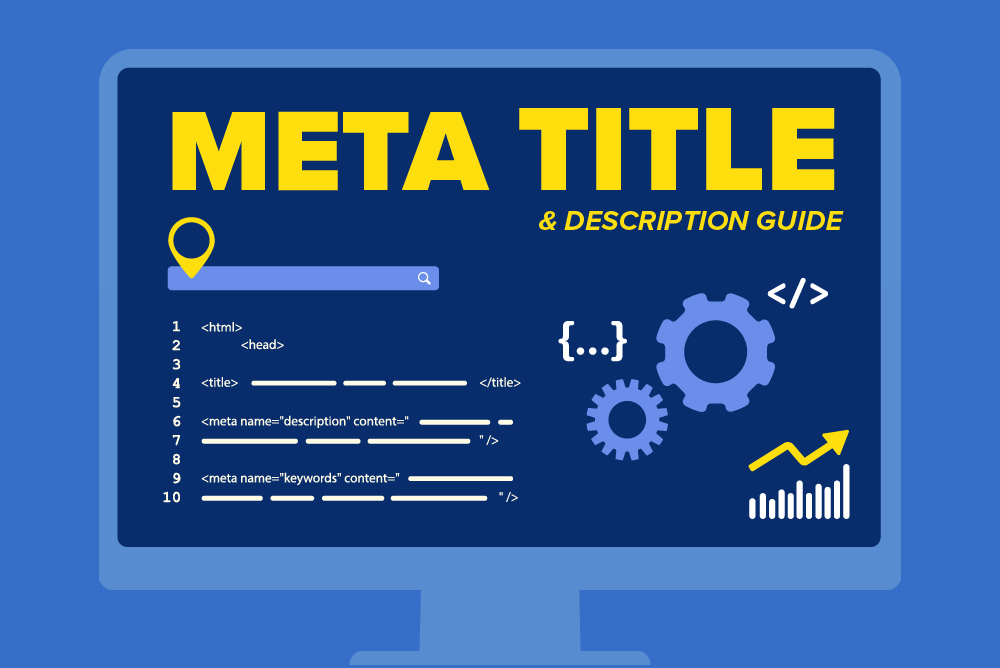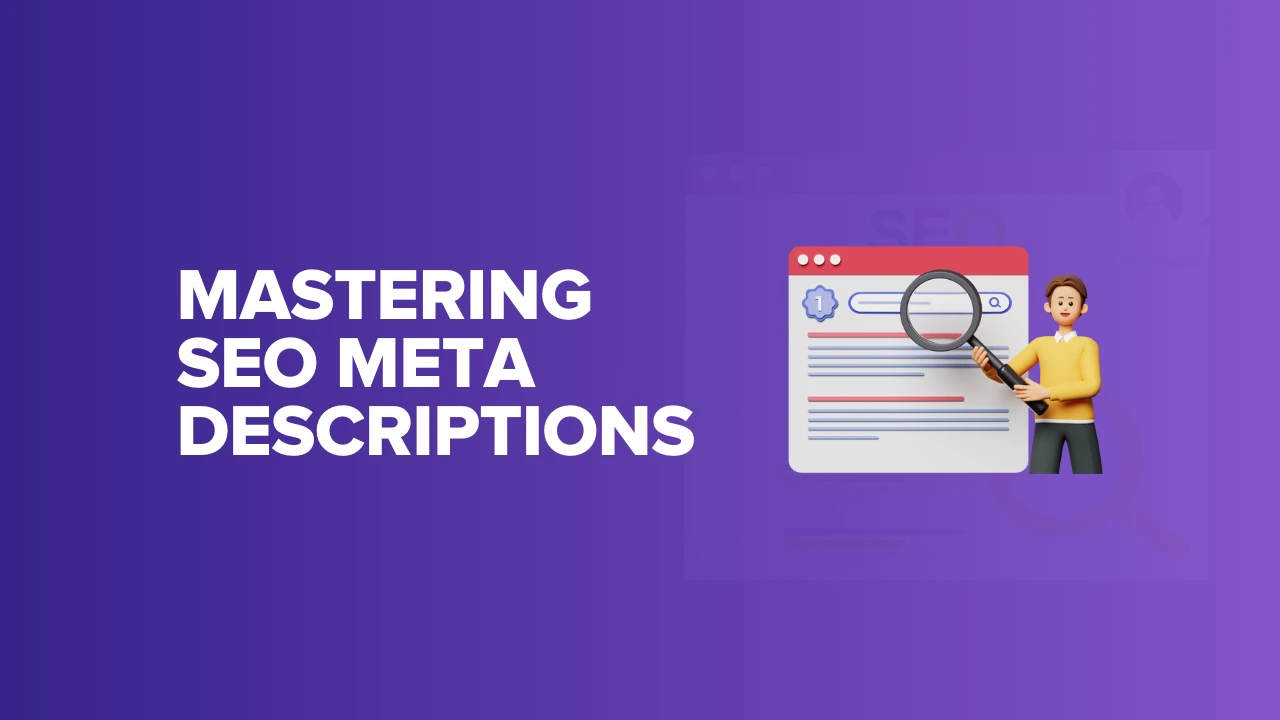Meta descriptions are essential for effective SEO. They improve click-through rates.
Crafting the perfect meta description can be tricky. It requires a balance of keywords, readability, and engagement. A well-written meta description can attract more visitors to your website.
This blog will guide you through the process of mastering meta descriptions.
You'll learn how to write descriptions that entice users and boost your site's visibility?
Whether you're a beginner or looking to refine your skills, this guide will provide valuable insights. Ready to enhance your SEO strategy?
Let's dive into the world of meta descriptions and discover their impact on your online presence.
How to create the right meta description?
-
Length: Keep under 155 characters to avoid truncation.
-
Content: Use active voice, include CTAs (e.g., "Learn more"), and match page content.
-
SEO: Embed focus keywords for visibility.
-
Tools: Yoast SEO checks length, keyword usage, and offers AI-generated suggestions.
-
Uniqueness: Avoid duplicates; prioritize critical pages if short on time.
What is a meta description?
An HTML tag (<meta name="description" content="...">) summarizing a webpage’s content (~155 characters). It appears under the title in search results to entice clicks. Google may override it with relevant page content.
Why set a meta description?
-
CTR Boost: Persuades users to click, indirectly improving rankings via higher engagement.
-
User Expectation: Clarifies page relevance.
-
Keyword Highlight: Google bolds query-matching terms, increasing visibility.
How to use valid HTML for page metadata?
-
Valid Elements: Use only
<title>,<meta>,<link>,<script>,<style>,<base>,<noscript>, or<template>in<head>. -
Avoid: Invalid elements like
<iframe>or<img>, which halt Google’s metadata processing. -
Order: Place critical tags (e.g.,
robots,canonical) before invalid elements to ensure visibility.
Importance Of Meta Descriptions
Meta descriptions help search engines know what your page is about. They should include your main keywords. This helps your page show up in search results.
A good meta description can improve your website's visibility. It tells people what they will find on your page.
Meta descriptions can make people click your link. A clear and engaging description draws attention. It can make your link stand out from others.
This can lead to more visits to your website.
More clicks mean more chances to engage with visitors. So, writing a good meta description is very important.
Crafting Effective Meta Descriptions
Meta descriptions should have a maximum of 160 characters. This ensures they are fully visible in search results. Shorter descriptions may not provide enough information. Longer ones might get cut off. Aim for a concise summary. This makes it easy for readers to understand.
Include relevant keywords in your meta description. This helps search engines understand your content. Place the most important keywords at the beginning. This increases their visibility. Avoid keyword stuffing. Use natural language. Make it easy to read. Keywords should fit naturally into the sentence.
Best Practices For Meta Descriptions
Each meta description should be unique. Avoid copying text from other pages. Search engines value fresh content. Unique descriptions stand out. They attract more clicks. Keep each description around 150 characters. This ensures it shows fully in search results.
Write in a way that grabs attention. Use strong words. Make it interesting. Focus on what the page offers. Think about what users want. Give them a reason to click. Use clear language. Avoid jargon. Make it easy to read.

Credit: www.firstpagedigital.sg
Common Mistakes To Avoid
Avoid keyword stuffing in meta descriptions. Keep them concise and relevant. Use active and engaging language to attract clicks.
Keyword Stuffing
Using too many keywords in your meta description can hurt your SEO. It makes your text hard to read. Search engines may see this as spam. Use keywords naturally. One or two keywords are enough. Make sure your description reads smoothly. Users should find it useful and engaging. This helps improve your click-through rate.
Duplicate Content
Having the same meta description on multiple pages is bad for SEO. It confuses search engines. They won't know which page to rank. Each page should have a unique meta description. This helps search engines understand your content. Users will also find it more helpful. Unique descriptions can improve your site's visibility. They make your content stand out.
Tools For Generating Meta Descriptions
Various online tools help create meta descriptions. These tools are easy to use. Just enter your page content. They generate a summary. This summary becomes your meta description. Some popular tools include Yoast and SEMrush.
SEO plugins for websites also assist. They offer suggestions for meta descriptions. These plugins analyze your content. They ensure the description matches your content. Popular plugins are Rank Math and All in One SEO Pack. These plugins help enhance your SEO efforts.

Credit: rocketclicks.com
Analyzing Meta Description Performance
Click-Through Rate (CTR) shows how many people click your link. A high CTR means your meta description is good. Check CTR in your analytics tool. Look for changes over time. Compare pages with different descriptions. Find what works best.
A/B testing helps you find the best meta description. Create two versions of a meta description. Show each to half of your audience. Track which version gets more clicks. Use the winning version.
Case Studies
Case studies explore effective strategies for crafting compelling meta descriptions. Learn techniques to improve click-through rates and boost search engine visibility. Discover practical examples and real-world results to enhance your SEO efforts.
Successful Examples
One company improved click-through rates by 20%. They used clear and engaging language. Another brand saw a 15% rise in traffic. Their meta descriptions included relevant keywords. A third site doubled their visits. They kept descriptions short and precise.
Lessons Learned
First, use actionable words. Words that prompt users to act. Next, keep it under 160 characters. Long descriptions get cut off. Lastly, always include a call to action. This encourages users to click.

Credit: wbcomdesigns.com
Future Trends In Meta Descriptions
AI can help create better meta descriptions. It learns from user behavior. This makes the text more relevant to users. AI tools can suggest keywords. They can also personalize descriptions. This saves time for writers.
AI can also analyze competitors. This helps to stay ahead. Using AI, descriptions can change automatically. They can adjust to new trends. AI integration is becoming essential for SEO.
Voice search is growing. People ask questions differently than they type. Meta descriptions need to reflect this change. They should answer specific questions. Use simple language and be direct.
Focus on long-tail keywords. These are phrases people say out loud. Voice searches often include more words. Adapt meta descriptions to fit this new trend. It's key for future SEO success.
Frequently Asked Questions
What Is the Best Practice for Meta Title and Description?
The best practice for meta titles is to keep them under 60 characters. Use relevant keywords and make them compelling. Meta descriptions should be under 160 characters, include primary keywords, and provide a clear summary to encourage clicks.
What Is the Ideal Character for A Meta Description?
The ideal meta description is between 150-160 characters. It should be concise, engaging, and include target keywords. This helps improve search engine ranking and click-through rates.
What Is a Good Meta Description for Seo 2025?
A good meta description for SEO 2025 should be concise, include relevant keywords, and offer a clear summary of the page content to attract clicks.
Conclusion
Crafting effective meta descriptions boosts your website's visibility. Clear, concise, and relevant descriptions attract more clicks. Use keywords wisely and keep your audience in mind. Test and tweak your meta descriptions regularly. This ensures they stay effective and engaging. Small changes can make a big difference.
With these tips, you're ready to create compelling meta descriptions. Happy optimizing!